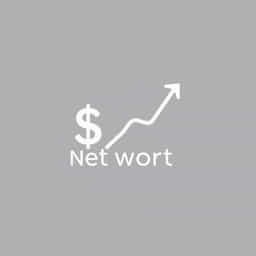Nabisco, one of the most iconic names in the American snack food industry, has built a reputation through household favorites like Oreo, Ritz, Chips Ahoy!, and Wheat Thins. With over a century of brand history and a vast product lineup distributed globally, many are curious about the net worth of Nabisco as a company. Although Nabisco is no longer an independent entity, its market value and financial influence remain significant under the ownership of a major multinational corporation. To understand Nabisco’s current financial status, it’s essential to examine its parent company, historical acquisitions, product impact, and position in the global snack market.
Nabisco’s Corporate Background
Nabisco, short for the National Biscuit Company, was formed in 1898 through the merger of several bakeries. It quickly became a major force in the packaged food industry, known for innovation in product development and mass marketing. Nabisco introduced numerous snack products that became cultural staples in the United States and abroad.
Over the years, Nabisco underwent multiple ownership changes. In 2000, the company was acquired by Philip Morris Companies, which merged it with Kraft Foods. Later, Kraft Foods itself split into two companies: Kraft Foods Group (focused on grocery products) and Mondelez International (focused on snack foods). Nabisco became a key brand under Mondelez International, where it remains today.
Ownership by Mondelez International
To understand the net worth of Nabisco today, one must look at Mondelez International, which owns and operates the Nabisco brand globally. Mondelez International is a publicly traded company with a strong global presence in the snack industry, owning additional major brands such as Cadbury, Trident, and Toblerone.
As of the most recent data, Mondelez International has a market capitalization of approximately $100 billion. This figure represents the total value of all outstanding shares of the company. Within this large portfolio, Nabisco is one of the cornerstone brands generating billions in revenue annually.
Nabisco’s Contribution to Mondelez Revenue
While Mondelez does not release individual brand-level net worth figures, industry analysts estimate that Nabisco contributes a substantial portion of Mondelez’s revenue particularly in the North American market. Oreo, for example, is one of the highest-selling cookies in the world, with billions in annual global sales. Ritz and Chips Ahoy! also rank among top-selling snack products in the United States.
Nabisco’s key product lines are considered high-margin items, with stable demand and global recognition. Analysts estimate that Nabisco-branded products may contribute over $10 billion in revenue annually for Mondelez. This makes Nabisco one of the most financially significant brands under the Mondelez umbrella.
Brand Valuation and Net Worth Estimation
Although Nabisco is not an independently listed company, its brand value can be assessed through industry rankings and financial modeling. Brand valuation firms like Interbrand and Forbes regularly evaluate brand equity based on recognition, financial performance, and customer loyalty.
According to branding experts, the Nabisco brand alone may hold a value in the range of $10-15 billion. This estimate includes the brand’s intangible assets such as customer trust, historical relevance, and market share. While not a direct representation of net worth in accounting terms, brand valuation offers a useful proxy when considering a brand’s worth in business terms.
Factors Affecting Nabisco’s Net Worth
Several factors influence how Nabisco’s net worth is viewed within Mondelez International:
- Product Sales: Oreos, Ritz Crackers, and other Nabisco snacks generate consistent and often growing sales worldwide.
- Brand Loyalty: Nabisco has deep brand equity and customer trust across multiple generations.
- Market Reach: Nabisco products are sold in over 100 countries, with strong distribution in both supermarkets and e-commerce channels.
- Innovation: Constant product development, such as limited edition Oreo flavors and healthier variations, keep Nabisco competitive in evolving markets.
Historical Acquisitions and Investment Value
In 2000, Philip Morris (then the parent of Kraft) acquired Nabisco for approximately $14.9 billion. At the time, this was considered a major investment in the snack food sector. Since then, the value of Nabisco has appreciated considerably as part of a growing global snacks portfolio.
The consolidation under Mondelez has increased Nabisco’s visibility and distribution capabilities. As Mondelez’s snack brands have continued to grow in both emerging and developed markets, the value of Nabisco as a strategic asset has only increased. Based on conservative projections, Nabisco’s current value if considered independently could exceed $20 billion in a hypothetical divestiture scenario.
Market Presence and Competitive Position
Nabisco competes in a crowded but lucrative market of snack foods. Its direct competitors include brands owned by companies such as Kellogg’s, Nestlé, PepsiCo (Frito-Lay), and General Mills. Despite the competition, Nabisco consistently ranks as a market leader in several key categories, particularly cookies and crackers.
The strong market presence of products like Oreo and Ritz ensures that Nabisco maintains a reliable stream of income for Mondelez. The company’s ability to innovate, adapt to changing consumer preferences, and expand globally strengthens its valuation over time.
Impact of Global Trends on Value
Modern trends such as increasing demand for healthier snacks, sustainability, and digital transformation influence Nabisco’s valuation and net worth potential. Mondelez has made efforts to address these concerns through:
- Reduced sugar and sodium contentin some Nabisco products.
- Sustainable packaging initiativesacross the product line.
- Digital marketing and e-commerce growth, expanding consumer access.
These steps help Nabisco retain relevance in an evolving market, thus maintaining or even enhancing its brand value and long-term financial contribution to Mondelez.
The net worth of Nabisco, while not precisely disclosed due to its status as a brand under Mondelez International, is undoubtedly significant. Based on historical data, brand valuation metrics, and revenue contributions, Nabisco could reasonably be valued in the range of $15-20 billion or more. Its products have a strong foothold in global snack markets, and its consistent performance makes it one of the core assets in Mondelez’s portfolio. Whether viewed through the lens of historical acquisition costs, brand equity, or market dominance, Nabisco stands as a financial powerhouse in the world of consumer goods.
